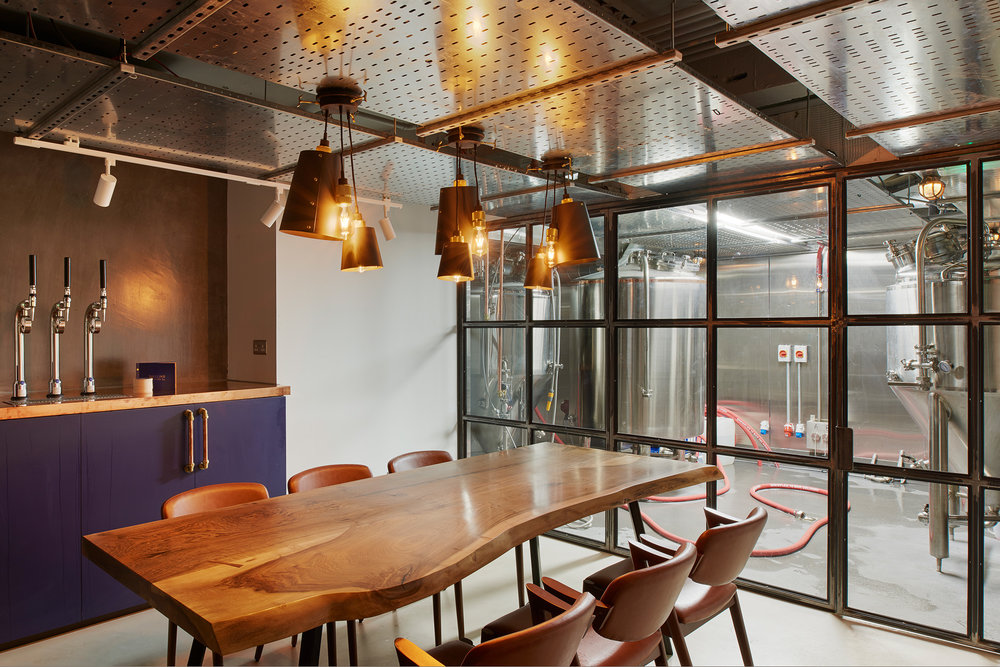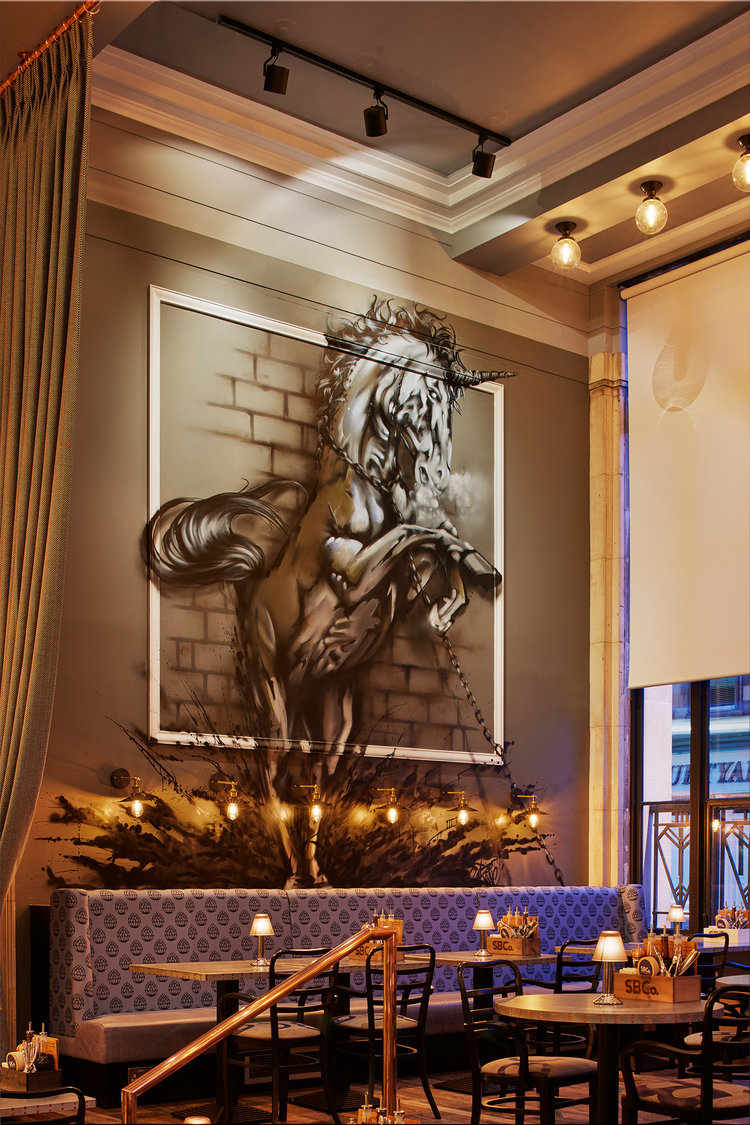A brewery in Scotland is about as unexpected as a misty day—in fact, beer making there dates back more than 400 years. But a sleek brewery that makes craft beer on the site of a restored 1920s bank, with original double-height windows, 20-foot coffered ceilings, and fluted marble columns? Now that’s new. “This venue is the first of its kind in this part of the world,” says James Dilley, the head of interior design and hospitality at Jestico + Whiles, the firm behind the new Shilling Brewing Co. “Glasgow has been quite a gritty city, but over the last few years things have been changing, and people have higher expectations.”
One look inside and it’s clear that Dilley and his team have set a new standard. It starts at the Carrara marble bar, where shiny copper tanks and numbered draft taps are situated beneath suspended spotlight fixtures—a radical departure from the kitsch typical of traditional brewpubs. The main space, with canteen-style timber tables and Ambience Design stools made of steel and distressed wood, sets the scene for saisons, German-inspired lagers, and artisanal pies made by an Italian pizzaiolo using yeast from Shilling’s beer.
Understated nods to the brewing process are sprinkled throughout the design: The oversized dripping of blue paint behind the bar nods to the water used to make the beer, while the the plum purple banquettes are lined with hops-patterned fabric. The large star inlay in the floor near the entrance “emphasizes that beer is the star of the space,” Dilley says. Though there’s more to the ale house than Scottish suds. In one of the alcoves, Jestico + Whiles commissioned local artist Gaz Mackay to paint a mural of a unicorn, an official symbol of Scotland. The artwork will change every six months or so, turning the brewery into a temporary exhibition space. “We may even have the next artist do it while the bar is open so people can watch,” Dilley says.
The chance to take a centuries-old practice and reinterpret it in a modern way was appealing enough for Jestico + Whiles, but one less obvious aspect of the commission is sustainable design. “It’s recycling in the most basic sense,” Dilley says. “You’re reusing a building and stripping it back.” In addition to the windows, ceiling, and columns, the Commercial Bank of Scotland’s original foot-thick vault doors were retained, now acting as entryways to ceramic-tiled restrooms.
Shilling stands out because it challenges the idea of what a brewpub in Scotland should be, while still reflecting its context and location—albeit in subtle ways. Or as Dilley puts it, “You don’t want to end up with a theme park.”

